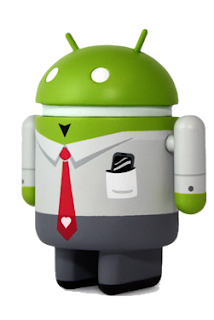This guide is meant to be an "All in one" guide for the ZTE Blade(Sold under the names Orange San Francisco, Dell XCD35,etc..) and I'll try my best to keep it that way.
What is the ZTE Blade?
The ZTE Blade (aka Venus or Orange San Francisco) is a touchscreen Android smartphone manufactured by ZTE for the European market. The device has various versions, differing in aspects such as screen type (AMOLED/TFT), camera (3.2MP or 5.0MP), and RAM (256MB or 512MB), although it is now clear that all European models have 512MB, but the Greek and older Hungarian versions of the phone have been limited to 256MB by software. A custom update is available on the internet to resize the partitions in order to get back the 256MB that’s originally taken up by software. Official Cyanogen Mod support was added in Cyanogen Mod 7.
Firstly let’s discuss about some terms I'm going to use and their meanings.
1. ROM.
Basically is an Android OS for your phone. Various ROMs exist out there based on Froyo, Gingerbread and Ice Cream Sandwich. Different versions of the ROMs can exist as well. ROMs in the form of a .zip file can be flashed (See below) via a recovery (See below).
2. Flash/Flashing.
Flashing is the procedure of installing a ROM via recovery or an app such as ROM Manager. Its the equivalent to installing an OS on a PC. Here, it refers specifically to Android ROMs.
3. Root.
Root is the ability to give Read/Write access and access to folders which are Read only. With root, you can browse system files and folders. It also allows you to flash custom ROMs and Recoveries. Root also gives you Superuser, an app that lets you handle root requests made by other applications.
4. Recovery.
It is to be used only in extreme circumstances if you're a newbie. Recovery is just like a Windows/Linux recovery and can be used to do a factory reset and format different partitions. Also, it’s used for various functions including Flashing a ROM, Backing-Up and Restoring of a ROM, etc. The most commonly used recovery is Clock Work Mod or CWM. Various stock recoveries exist but not as common as CWM. Further, a recovery has its own partition, so even if you screw up your ROM, you can always go back into the recovery (Explained in detail under flashing a ROM).
5. Clockwork Mod or CWM Recovery.
I'm talking about CWM here in specific because it’s the most widely used recovery out there and doesn't have any major issues. It can be flashed onto your recovery partition after you've acquired root (Explained below under Rooting) through the app ROM Manager.
6. GEN1/GEN2.
Stands for Generation. You can find out the Generation of your phone using the Ask Mr. Pigfish app here. GEN1 ROMs cannot be installed on GEN2 and vice versa. The difference is something in the memory layout and the radio images that most people don't need to understand.
7. TPT.
Total Phone Transfer is a method that changes the phone image layout. It can be used to convert your phone's GEN to enable flashing of GEN1 ROMs on a GEN2 device and vice versa. Some TPTs contain only Recovery, whilst others are full systems. If you flash a TPT which contains only a recovery you should have a Rom ready to flash, which is for the correct gen of your phone.
A TPT image differs for Gen1 and 2. The layout/structure and the format of TPTs differs between Gen1 and Gen2.
8. Partition/Partitioning.
The Blade has a partition based. Internal memory unit which is divided into System, Cache and Data.
System partition is where the ROM files go. Data is where the application data gets stored and Cache is for temporary storage of apps like the Market/Play store, etc... The phone's partitioning differs from GEN1 to GEN2 as told above.
9. Gapps/Google Apps.
It’s a package that contains Google's main applications and files that are user friendly like Gmail, Talk, Market/Play Store, etc. They're different for different Android versions such as Gingerbread and Ice Cream Sandwich.

0 comments:
Post a Comment